Pruning espalier apple trees – how and when to complete this essential task
Do it correctly and you'll be guaranteed a bumper crop of delicious apples to enjoy each year


Growing fruit trees in restricted forms has been done for centuries. Espaliers bring structure, beauty, and delicious fruit to spaces often left bare, like walls and fences. It is highly rewarding to grow trained fruit trees, but does not come without annual maintenance. However, do not fear reaching for the pruning shears as pruning espalier apple trees need not be daunting.
Knowing how to prune an apple tree that is trained brings real advantages and there are just a few key steps to understand to help ensure you get tasty fruit year-after-year.
I have been fortunate enough to look after a couple of large apple tree collections. One was an old orchard that was maintained and harvested for an annual apple festival celebrating all things apples. The other was in a walled garden that was full of espalier fruit trees. There were espalier apples on arches through the garden, and also the walls, that needed looking after, pruning and harvesting. It was sometimes hard, but always very enjoyable, work looking after those collections of fabulous apple trees.
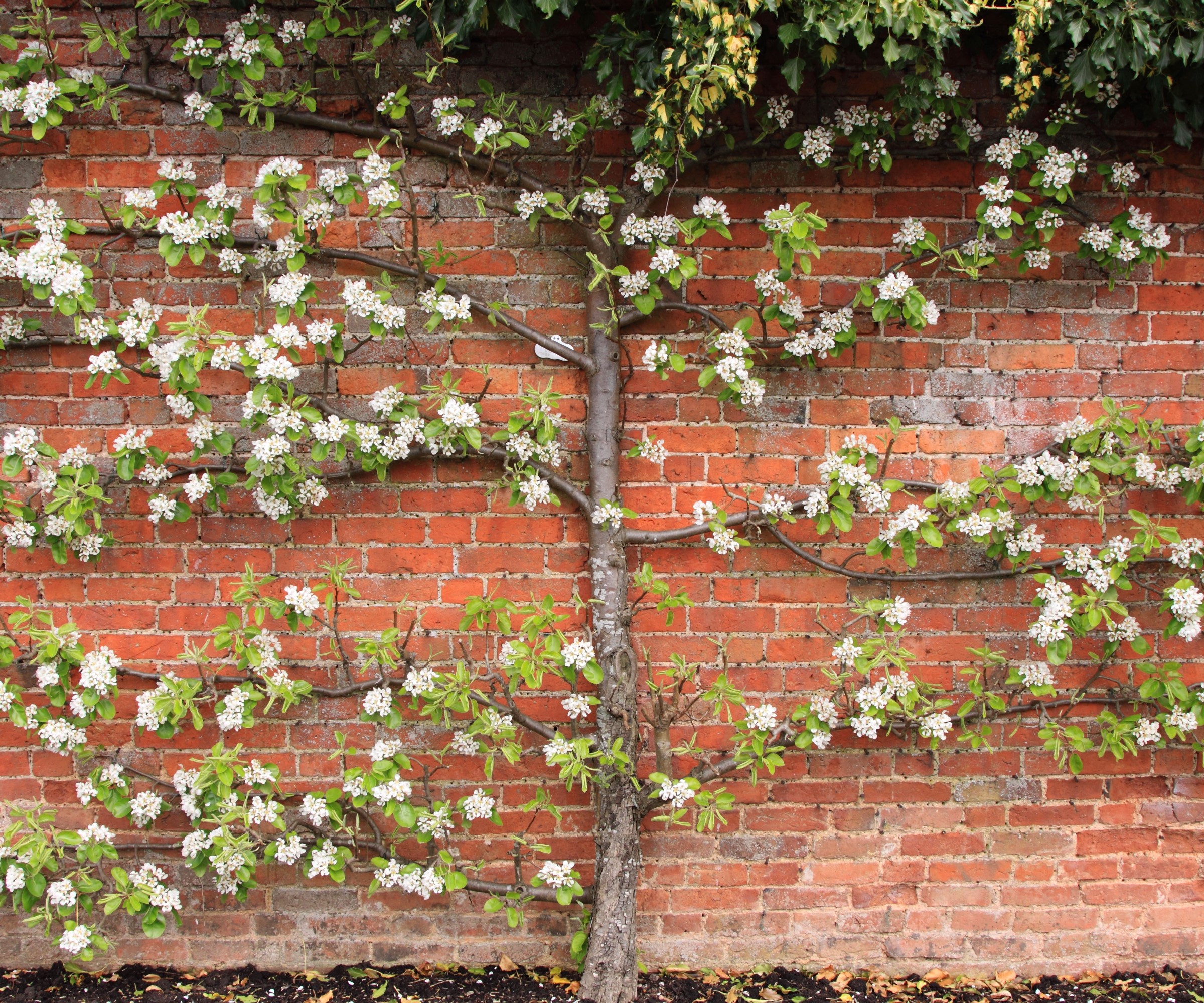
Espalier apple trees can be trained to grow against walls and fences
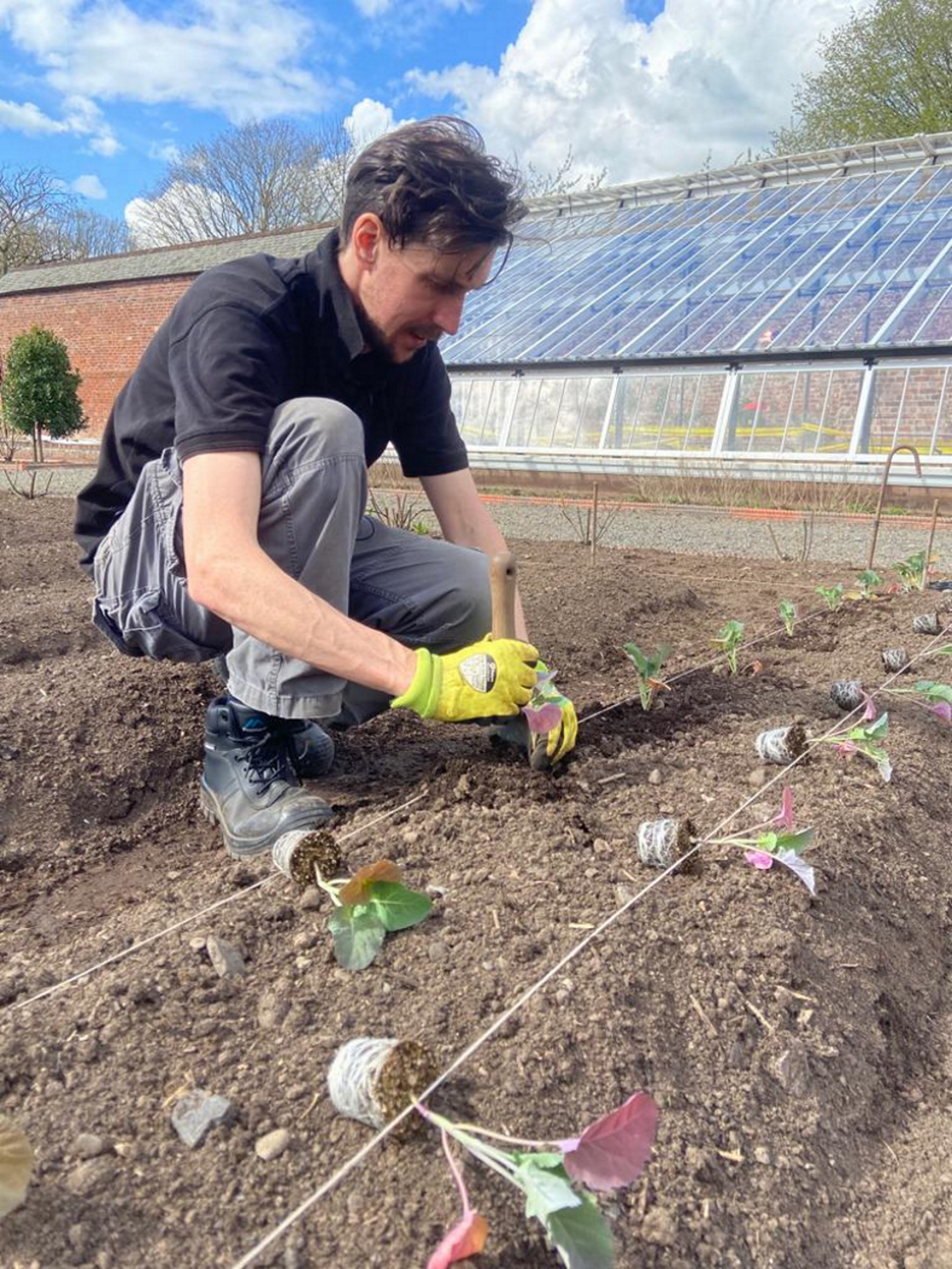
Drew is a former professional gardener with the National Trust in the UK and he also worked at the historic Netherby Hall. The extensive walled garden boasts a large fruit tree collection. He helped maintain this extensive collection of trees – which included many espalier apple trees – year-round to keep them healthy.
Why do you need to prune espalier apple trees?
There are several benefits to learning when to prune an apple tree and the correct methods for doing it, especially when it comes to espalier trees. First, it will help keep the shape. It also ensures good light and air circulation, which will help keep the tree healthy and encourage fruit ripening.
Pruning espalier apple trees will result in more fruit as most apples fruit on short and stubby spurs that grow along the main branches. The objective of the pruning is to encourage the production of these fruiting spurs - which will give more apples.
Lucy Chamberlain, fruit and veg expert for Amateur Gardening, claims apples are ‘ideal for espaliers’ due to how and where they produce their fruiting buds and, once the main shape of the espalier is achieved, pruning is simple the following years.
‘Initially the objective is to build up these "framework" stems, then maintenance consists of thinning the spurs annually,’ she explains.
Design expertise in your inbox – from inspiring decorating ideas and beautiful celebrity homes to practical gardening advice and shopping round-ups.
‘By cutting back this year’s growth, you’ll encourage fruiting spurs to form, let more light reach the ripening crop and improve air flow (which will decrease the build up of pests and diseases). All that with just a few snips of your pruning shears!’
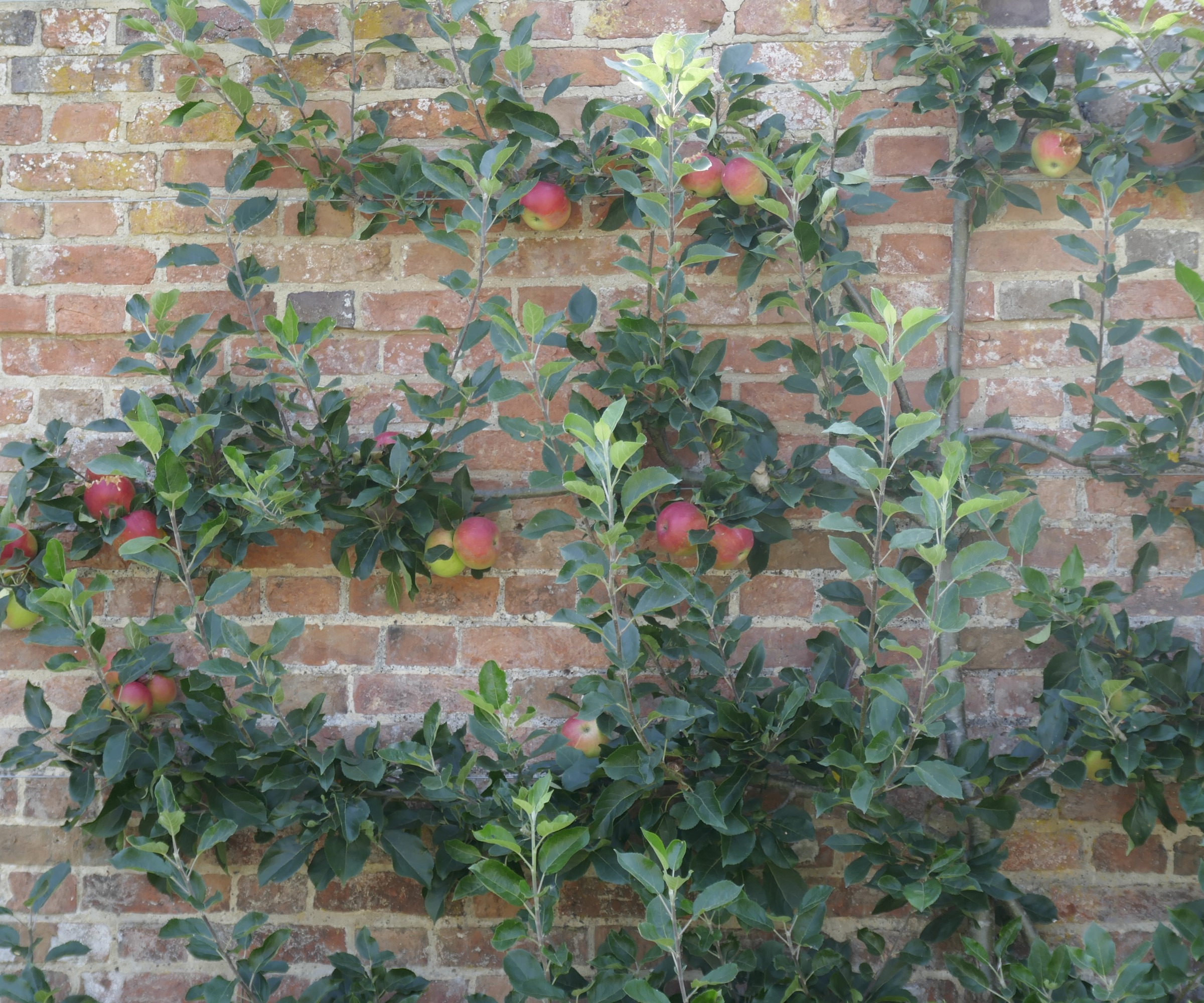
Pruning give apples more light to help them ripen
What tools do you need for espalier apple tree pruning?
When pruning espalier apple trees, there are a few key tools that you will need. A good pair of pruning shears is vital, as that is the tool you will predominantly use. My pruning shears of choice for espalier pruning are the Felco F2 classic pruning shears, available from Amazon. Any thicker wood that needs pruning will require loppers, and any major remedial work to remove large bits of wood will need a pruning saw, such as this Fiskars 7 inch design from Amazon.
Importantly, make sure to have clean garden tools and ensure tools are sharp to guarantee clean cuts that will heal over quicker and reduce the risk of infection getting into the tree. It is also a good idea to sterilize pruning tools before and after using, to minimize the risk of contamination from pathogens or bacteria that could be transferred to or from another plant.

Make sure all tools are clean and sharp
When to prune espalier apple trees
Getting the time of year right for pruning is just as important as knowing when to plant your apple tree in the first place.
Established espalier apple trees are routinely pruned twice a year. The best time for apple tree pruning is in winter, when the tree is dormant, and espaliers also need a second prune in summer. It is a sound idea to get a good balance between the two. The winter prune can be used for more major renovation work and to deal with any congested branches, and the summer prune aids with encouraging the development of fruiting spurs and to ripen the fruit.
Steve and Val Bradley, experts from Amateur Gardening, advise that to guarantee a good yield of fruit in a kitchen garden you need to accept that pruning is ‘not just a winter task’ as it is with normal fruit trees.
‘Once you prune year-round, you begin to train your fruit trees rather than just shape them. Research has found that when the current season’s apple shoots have 23 leaves, changes take place on a cellular level and the base of the shoot starts to form flowering/fruit buds for the following year,’ they add.
‘By pruning in the right way, at the right time, and therefore working with the plant’s growth patterns, it is possible to encourage the development of fruit bearing spurs and reduce the amount of excessive shoot extension.
‘The basis of this training is to work with the tree to prune and shape it so that it responds in the desired way to give you the result you are aiming at.’

Growing espaliers allow for lots of fruit in even a small space
Pruning young espalier apple trees
Espaliers traditionally start as a single-stemmed young tree that is cut back to around 1ft from the ground. Once the top buds grow, one is trained vertically and two others selected to be trained out as the horizontals. After being tied in during the winter, the central stem is cut back and left to put out shoots to form the next layer.
This process is repeated annually until the final tier of growth has been achieved. Any vertical shoots during this time on the horizontal branches should be cut back to 5 inches, and these will become fruiting spurs. By trimming back the horizontal shoots to three buds, that will also create more spurs to carry fruit.
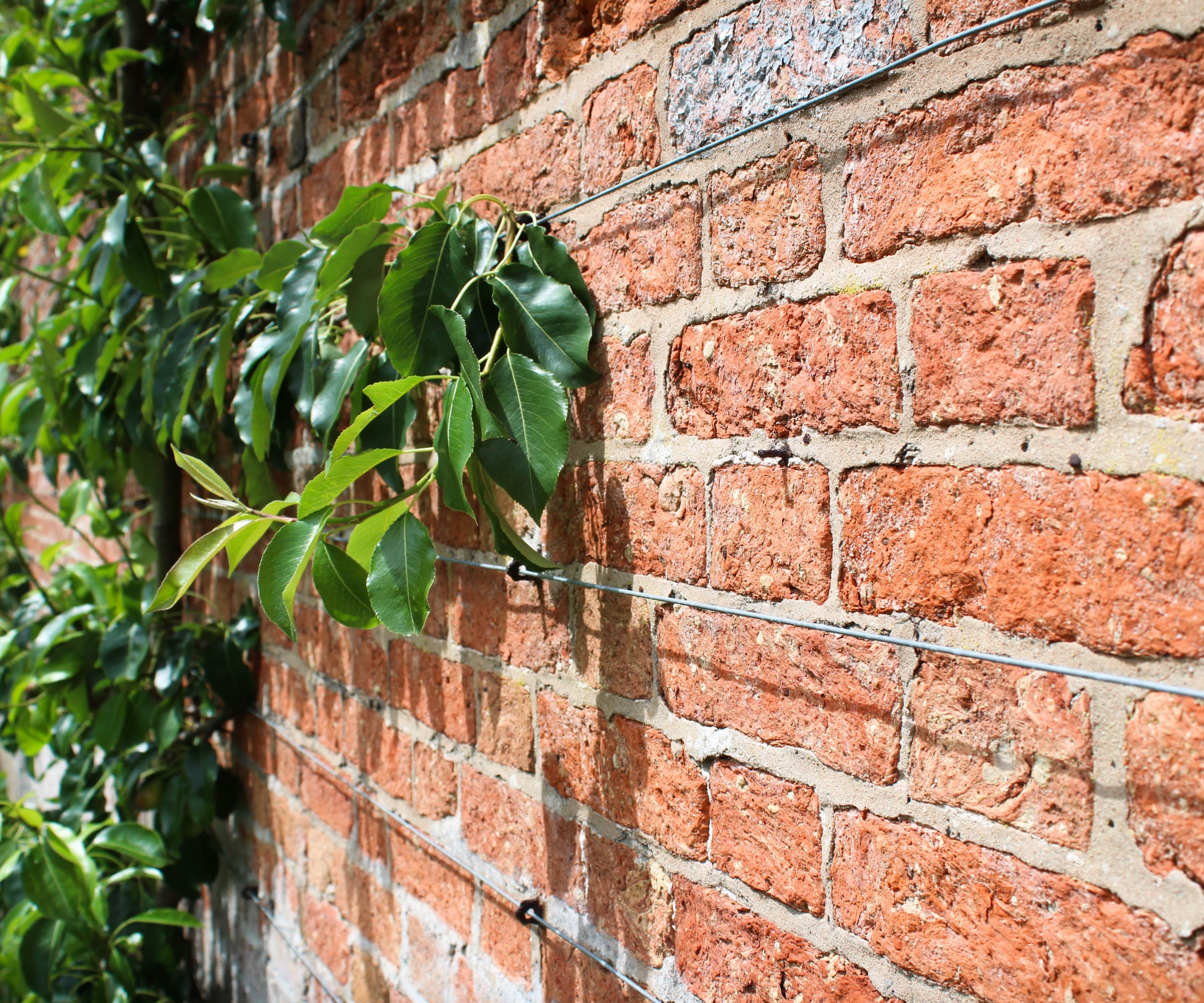
Branches are trained horizontally along wires attached to walls
Winter pruning of espalier apple trees
Annual winter pruning when an established espalier apple tree is dormant offers the opportunity to remove dead, diseased, and damaged wood. The pruning should also be done to keep the tree in shape.
The winter pruning promotes growth and offers a good chance to deal with any overcrowding on the tree. Congested fruiting spurs can be thinned, ideally they should be around three inches apart.
Any major renovation pruning should also commence in the winter, however, as Robert Silver from ProGardeningBlog warns, you should avoid over-pruning. He advises: ‘It's important not to remove too much of the tree at once, as this can stress the tree and reduce its fruit production. Remove no more than 25 per cent of the canopy each year.’
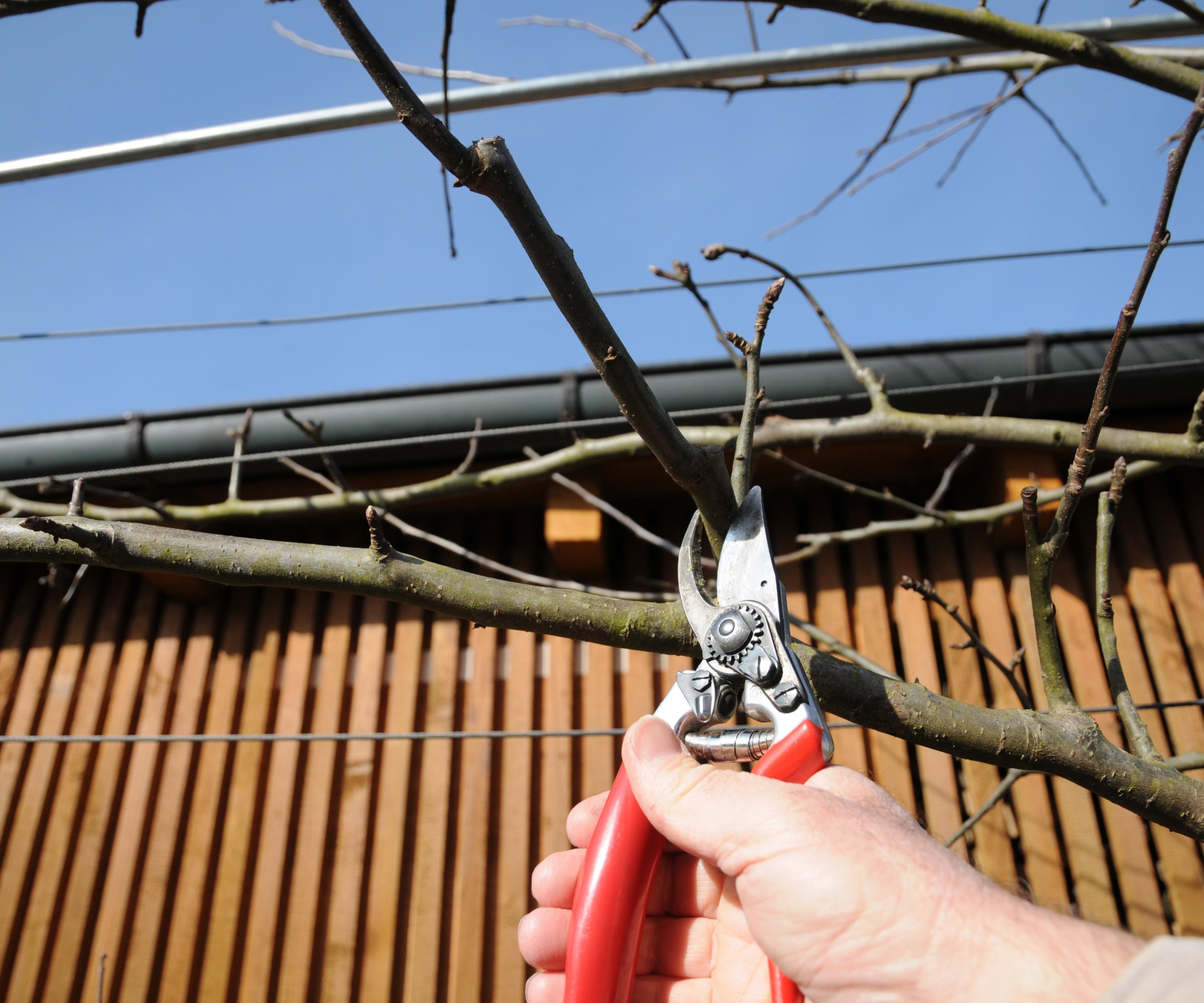
Winter pruning is the time for removing branches growing too far out of the framework
Summer pruning of espalier apple trees
When pruning established espalier apple trees in the summer, there are two key elements you are looking at. This is with the intention of restricting growth, as well as letting more light and air in to ripen the existing fruits that are growing. If you're also pruning pears trees that are grown as espaliers, you can take a similar approach in summer too.
Do make sure that your apple tree is one that is a spur-bearer, as any fruits that are tip-bearers should not be pruned in the summer.
- Side shoots growing from the main horizontal arms of the tree are cut back to three to four leaves – around 2-4 inches.
- Shoots growing from side shoots that have been previously pruned are cut back to one leaf.
During summer pruning, continue to identify and remove any dead, diseased, or damaged branches. Monitor the fruit too for any sign of pest damage or diseases and make sure to remove any affected fruit, so they do not impair others around them.
Take care when summer pruning not to damage or knock any apples growing on the tree as you do not want your fall harvest to be reduced. However, any apples knocked off can be picked up and used. Rather than storing the apples you can use them in the same way as windfall apples, for recipes such as jams, jellies, and chutneys.

Drew has worked as a writer since 2008 and was also a professional gardener for many years. As a trained horticulturist, he worked in prestigious historic gardens, including Hanbury Hall and the world-famous Hidcote Manor Garden. He also spent time as a specialist kitchen gardener at Soho Farmhouse and Netherby Hall, where he grew vegetables, fruit, herbs, and cut flowers for restaurants. Drew has written for numerous print and online publications and is an allotment holder and garden blogger. He is shortlisted for the Digital Gardening Writer of the Year at the 2025 Garden Media Guild Awards.